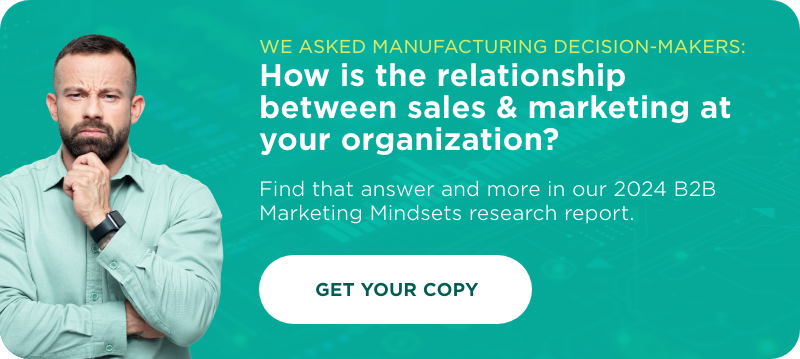
How to create downloadable content that sells your company instead of confusing your leads.
Marketing ebooks. Downloadable Content. Whitepapers. DLC. They go by different names, but their purpose is the same: to create a valuable and informative piece of content that will generate sales leads for your business.
However, DLC comes in many forms. Many users understandably confuse marketing ebooks with the kinds of ebooks you might buy on Kindle: electronic version of the books you might pick up at your local book store. In the marketing world, what we really mean when we talk about ebooks are gated content in PDF form used as lead generators that website visitors download in exchange for their email addresses.
Done well, marketing ebooks are one of the best sales tools you can have on your website. They’re a chance to showcase a beautiful piece of branded content the speaks to the quality of work your business provides. A well-written piece of DLC does more than just sell: it also educates. But, due to the confusion with print books, many businesses aren’t sure how their ebooks are supposed to look.
So, for any businesses out there who feel tempted to produce a whitepaper that looks like it was designed in Word, here are a few of our ebook design tips to give you an idea of what you should aim for instead.
1. Love your white space.
Good design is built around white space. Without it, pieces quickly become overwhelming. White space helps your design breathe, makes your writing more legible, and helps establish visual hierarchy on the page. Designs that lack white space appear crowded and busy, with too many competing elements and not enough direction. More importantly, there’s no reason to crowd more text onto one page: you’re not printing this, you have all the space you need.
2. Use large and legible fonts.
We often see ebooks designed in small type font as if they’re going to be printed out like a brochure. However, on a screen, small text can be hard to read. Those of us who already spend all day on the computer don’t need small text to contribute to our reader fatigue. So do you users a favor and choose a larger font type.
3. Don’t overload the copy.
Many people see “ebook” and think that it should be… well, a book. As in: book-length. But the truth is, many marketing ebooks are between 1,500 and 3,000 words long—about as long as a college essay. You can write longer ebooks, and if you have more to say you totally should. We’re all for well-written long-form content. But don’t stuff your copy to make it longer without purpose, and don’t feel like you have to fit all that copy into a limited number of pates. So long as you’re still providing value, keep going. When you’re done, stop.
4. Think like a picture book.
People like reading designed content, particularly when it’s on their computer screens. Your whitepaper doesn’t have to be literally white. It can—and should—include tasteful use of color as well as graphics and images. Why not take an entire page to highlight a meaningful sentence or to illustrate a data set? In some ways, your ebook can resemble a picture book: lots of white space, large text, compelling pictures and images. Only instead of a charming story about animals, it’s a compelling case study full of relevant statistics and carefully placed pull quotes that sells your business to qualified sales leads. It’s essentially a cross between a long-form article and an infographic. Who wouldn’t want to read that?
5. Make it shareable.
Many businesses fail to make full use of their ebook’s potential when they neglect the e part of their marketing book. Unlike a print book, ebooks can include hyperlinks and other rich content. That means that websites should be active hyperlinks and the table of contents should be clickable. More than that, you can make your downloadable content more shareable online by making certain lines of text or pull quotes easy to post on social media. Have a killer statistic? Allow your users to Tweet it simply by clicking.
6. Design for web, not print.
Some users will print your ebook, so you should always test it on your office or home printer to make sure it looks fine in that format. But you must make your design digital-first. For most of your readers, that will mean a landscape rather than a portrait layout. Mobile devices and tablets might accommodate a portrait layout, but desktop screens won’t. However, all devices can display a landscape layout just fine, and landscape usually gives your design a little more room to breathe. Also, remember to avoid two-page spreads. Your readers won’t be seeing pages side-by-side but one-at-a time. Spreads will only cause confusion.
Downloadable content provides a valuable opportunity to connect with your market.
As we said before, ebooks work best when they educate. Very few people will be drawn to a book titled “X reasons why our company is so great.” However, an ebook with a title like “X ways we can save your business money” or “How to make your life better in X easy steps” is a much more compelling draw.
If you have content worth sharing, don’t let yourself down with a design that turns visitors away. Make your content part of your brand. Give it room to breathe, make it look attractive, and give your readers a reason to share it with their network.
And if you don’t know how to do that? Talk to us. We can help.






